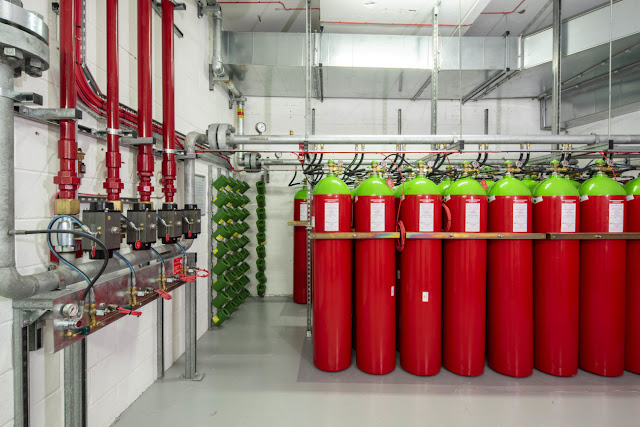Fire suppression systems are designed to detect, control, and extinguish fires automatically or manually. They are critical for protecting lives, equipment, and infrastructure. Below is a breakdown of major fire suppression systems, their uses, and how to choose the right one.
1. Types of Fire Suppression Systems
A. Water-Based Systems
✔ Used for: Class A fires (wood, paper, textiles)
✔ Types:
Sprinkler Systems (Wet, Dry, Pre-Action, Deluge)
Water Mist Systems (Fine droplets for Class A, B and electrical fires when de-energized)
✔ Limitations: Not suitable for flammable liquids (Class B) or live electrical fires (Class C).
B. Gas-Based Clean Agent Systems
✔ Used for: Data centers, labs, archives (protects sensitive equipment)
✔ Agents:
FM-200 (Fast-acting, safe for occupied spaces)
Novec 1230 (Environmentally friendly)
CO₂ (Carbon Dioxide) (For industrial hazards but dangerous to humans)
✔ How it Works: Displaces oxygen or interrupts chemical reactions.
C. Foam Systems
✔ Used for: Flammable liquids (Class B – oil, fuel, chemicals)
✔ Types:
AFFF (Aqueous Film-Forming Foam) – Forms a barrier on fuel surfaces.
CAFS (Compressed Air Foam System) – High-expansion foam for large areas.
✔ Common in: Oil refineries, aircraft hangars, fuel storage.
D. Dry Chemical & Powder Systems
✔ Used for: Class A, B, C and electrical fires
✔ Types:
ABC Powder (multi-purpose)
BC Powder (For flammable liquids/gases)
Class D Powder (For metal fires – sodium, magnesium)
✔ Best for: Industrial kitchens, factories, chemical plants.
E. Specialized Systems
✔ Kitchen Hood Systems (Wet Chemical) – For grease fires (Class K).
✔ Explosion Suppression – Used in high-risk industries (mining, chemical processing).
2. How to Choose the Right System?
| Factor | Consideration |
|---|---|
| Fire Risk (Class) | A, B, C, D, K or electrical? |
| Environment | Data center vs. oil refinery vs. office? |
| Safety for People | CO₂ is deadly; FM-200/Novec are safer. |
| Equipment Safety | Water damages electronics; gas doesn’t. |
| Regulations | OSHA, NFPA, ISO compliance required. |
3. Maintenance & Inspection
✔ Monthly Checks: Pressure gauges, nozzle obstructions.
✔ Annual Tests: Full discharge test (for gas systems).
✔ Documentation: Log inspections per NFPA 25 (water systems) or NFPA 2001 (clean agents).
4. Latest Innovations
Aerosol Fire Suppression (Compact, no piping needed).
AI Fire Detection (Early warning with thermal cameras).
Eco-Friendly Agents (Replacing Halon and PFAS foams).
Which System is Best for Your Facility?
Offices/Retail: Sprinklers + portable extinguishers.
Data Centers: FM-200/Novec 1230 gas systems.
Industrial: Foam or dry chemical systems.

Comments
Post a Comment